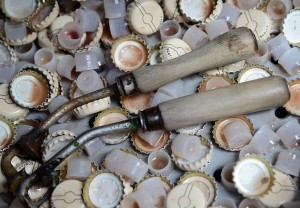The truth about biodynamic viticulture.
Preparation 500 (horn manure) is prepared in autumn from a cow horn filled with cow manure and composted over winter when the soil forces are turned inwards. It is generally applied at the end of autumn and at the beginning of spring. It is applied to the soil and is ploughed into the soil straight afterwards. Its aim is to stimulate soil life.
I have been visiting a well known vigneron in Mareuil-sur-Ay for a number of years, and had been importing some of the cuvées. So I knew the wines well. They did attempt a foray into biodynamics in 1997 but due to poor weather this was a disaster. Then in 2007, due to some vineyard acquisitions an opportunity arose to create a new business structure and convert 2.5ha to biodynamics. They enrolled the assistance of the master of biodynamics – Herve Jestin, to assist with the conversion.
So I first got to taste their initial bio cuvée when it was a baby. Different. Very different. Structured and spicy and still quite raw. It had only been on lees for a few years, still three years away from release. But already one could see big differences between the regular range of cuvées and the bio. Don’t get me wrong. The regular range is excellent. Some wood maturation for the chardonnay. Low dosages etc. Really nice wines.
Last year I got an opportunity to taste the official release of the bio cuvées. Two from 2010 vintage and one from the 2011 vintage. Wow. The fine grain acidity is immediately obvious. Vivacity and energy in spades. Can wine have ‘energy’? We see more purity, minerality, length, precision, better acidity and complexity in the bio cuvées. The fruit definition is more precise. The varietal definition is more precise.
